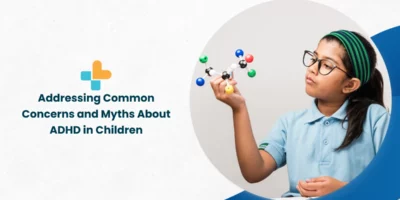Overweight and obesity rates among children and teenagers have been increasing globally, making paediatric obesity a major health concern.
According to statistics from the World Health Organization, 39 million children under the age of 5 were overweight or obese in 2020. To address this alarming issue, the American Academy of Pediatrics has recently released updated clinical practice guidelines for evaluating and treating paediatric obesity.
In this blog, we will delve into these guidelines and explore the various factors contributing to paediatric obesity, as well as effective strategies for the prevention and treatment of childhood obesity.
What Is Paediatric Obesity?
Paediatric obesity is a condition characterized by excess body fat in children and teenagers. It occurs when a child’s body weight is higher than what’s considered healthy for their age, gender, and height.
Typically, it’s calculated by measuring a child’s body mass index (BMI), which compares their weight with their height. According to the World Health Organization (WHO), a BMI of 25 or above is considered overweight.
Childhood obesity not only puts children at greater risk of developing severe health problems such as heart disease, diabetes, and liver disease, but it can also negatively impact their mental health, leading to stress, depression, and poor self-esteem.
Complexity of Paediatric Obesity
In the past, experts believed that obesity was solely a result of personal choice and could be resolved by simply eating less and exercising more. However, the reality is much more complex. A vast body of medical evidence suggests that various factors, including genetics, physiology, socioeconomic status, and environmental factors, contribute to paediatric obesity.
1. Genetics
Genetics play an important role in the development of obesity in children. If a child has one or both parents who are obese, they are at a greater risk of becoming obese themselves.
2. Environmental Factors
Living in a poor environment can increase a child’s likelihood of becoming obese.
Factors such as access to healthy food options, safe places for physical activity, and exposure to unhealthy foods and drinks can all impact childhood obesity.
3. Lifestyle Factors
Poor eating habits (high calories diet, sugar, etc.), lack of physical activity, and excessive screen time are all lifestyle factors that can contribute to paediatric obesity.
Being physically inactive and spending long hours on sedentary activities (like watching TV and playing video games) also increases a child’s risk of obesity.
4. Psychological Factors
Emotional eating, stress, and depression can all contribute to paediatric obesity. Children who struggle with these issues may turn to food as a coping mechanism.
5. Other Medical Conditions
Certain medical conditions, such as hormonal imbalances or genetic disorders, can contribute to paediatric obesity.
Pediatric Approach To Treating Childhood Obesity
Paediatric guidelines encourage healthcare providers to develop individualized treatment plans for each child or teen. These plans prioritize healthy lifestyle changes that include dietary modifications, promote physical activity, and suggest behavioural therapy.
It also recommends involving families in the treatment process to create a supportive environment for the child and nurture healthy habits.
According to paediatric guidelines, the following approach may help assess and overcome childhood obesity.
1. Identify the Problem
The first step in addressing childhood obesity is to recognize that there is a problem. A paediatrician can help assess a child’s weight status and identify any underlying health issues.
2. Assess Lifestyle Habits
Assess the child’s lifestyle habits, including their diet, physical activity levels, and screen time. This can help identify areas where changes need to be made.
3. Set Realistic Goals
Set realistic and achievable goals with the child and their family. These goals should be specific, measurable, and time-bound. For example, increase the child’s daily physical activity by 30 minutes.
4. Implement Changes
Enforce a gradual change in children’s diet by promoting a balanced and healthy diet that includes more fruits, vegetables, and whole grains. Limit their intake of sugar-loaded and fatty foods.
Also, encourage them to engage in physical activities that they enjoy, such as sports or dancing.
5. Address Underlying Issues
Childhood obesity can be caused by underlying health issues. A healthcare professional can help address these issues and develop an appropriate treatment plan.
Treatment for Severe Paediatric Obesity
In severe cases of childhood obesity, the following approaches may be used for treatment.
1. IHBLT
The best evidence-based treatment is called intensive health behaviour lifestyle treatment, or IHBLT.
This involves in-person, family-based, multidisciplinary counselling on nutrition and physical activity based on your community and resources. It should involve at least 26 hours over at least three to 12 months to make a difference.
2. Medications
A number of weight-loss medicines have been approved for children. They all offer modest benefits, but they don’t replace lifestyle changes.
3. Paediatric Surgery
Bariatric surgery may offer tremendous long-term benefits, especially for children or teens who have severe obesity. It’s usually considered an option for adults, but growing evidence indicates it helps children too.
Paediatric Obesity: What You Can Do
Paediatric obesity can be prevented and treated with the right support, resources, and interventions. With expert paediatricians’ guidance at the right time, it’s possible for children with paediatric obesity to have equal opportunities, live healthily, and reach their full potential.
If you’d like to learn more about childhood obesity or seek medical intervention and counselling for your child, get in touch with Ayu Health at +91 636-610-0800 or book an appointment on our website.
Our Hospital Locations
Pediatrics Surgery Hospitals in Chandigarh | Pediatrics Surgery Hospitals in Bangalore | Pediatrics Surgery Hospitals in Jaipur | Pediatrics Surgery Hospitals in NCR | Pediatrics Surgery Hospitals in Hyderabad
Our Doctors
Pediatrics Surgery Doctors in Chandigarh | Pediatrics Surgery Doctors in Bangalore | Pediatrics Surgery Doctors in Jaipur | Pediatrics Surgery Doctors in NCR | Pediatrics Surgery Doctors in Hyderabad
About the Author

Dr. S. Goel
Dr. S. Goel is a renowned Internal Medicine Specialist currently practicing at Ayu Health, Bangalore. He is a Specialist in Internal Medicine, Diabetes HTN, Paediatric Care, and Family Medicine.




